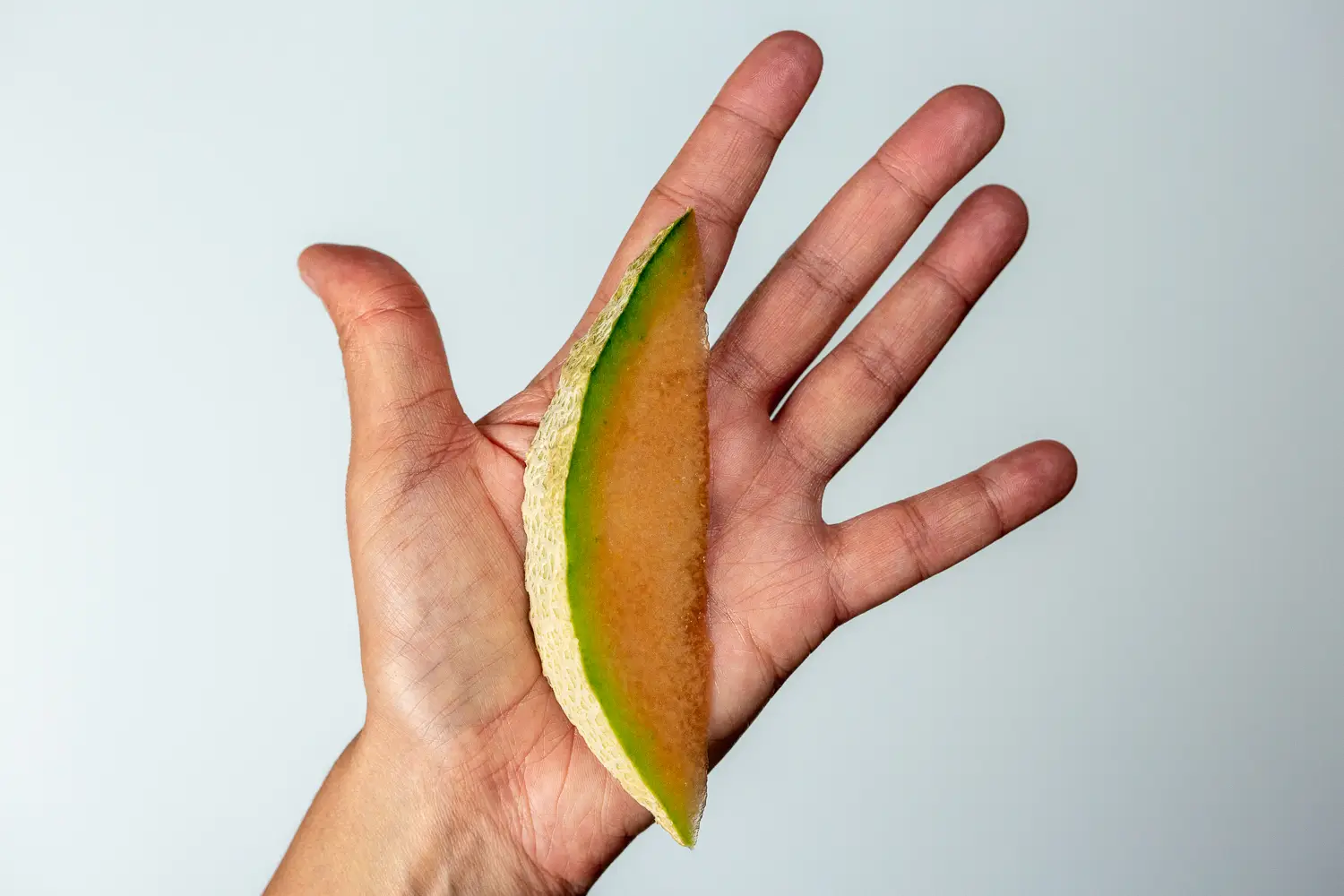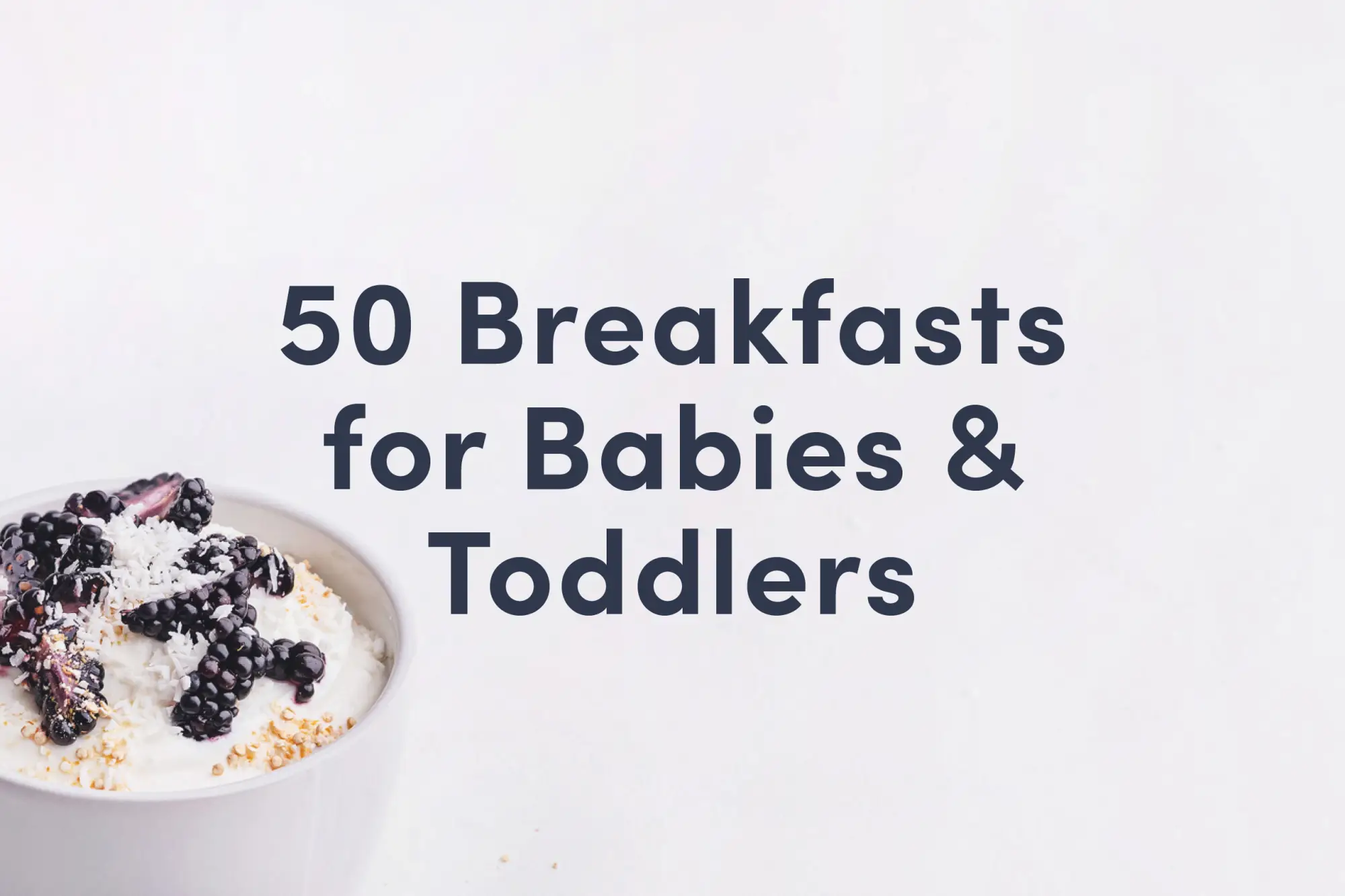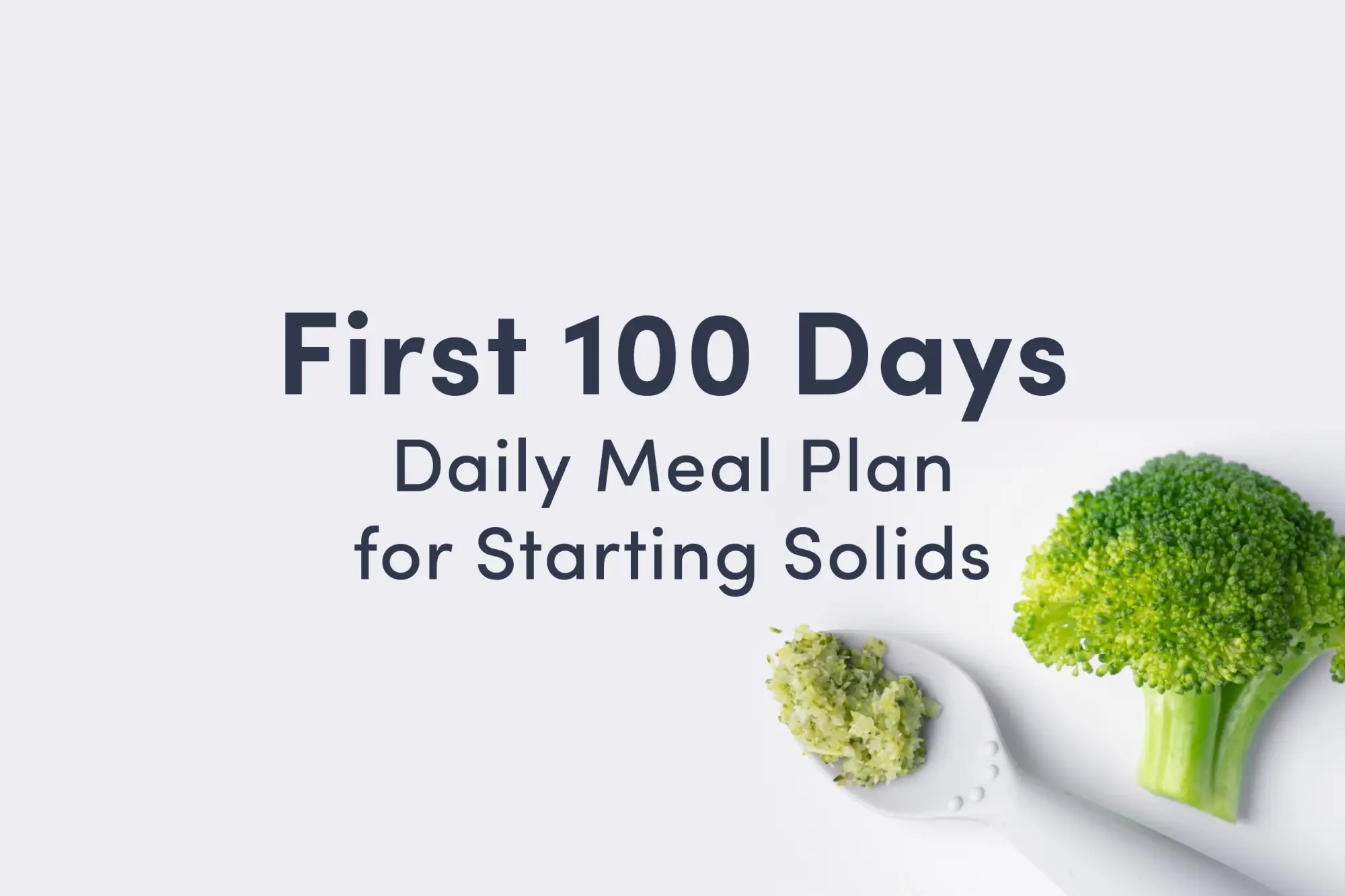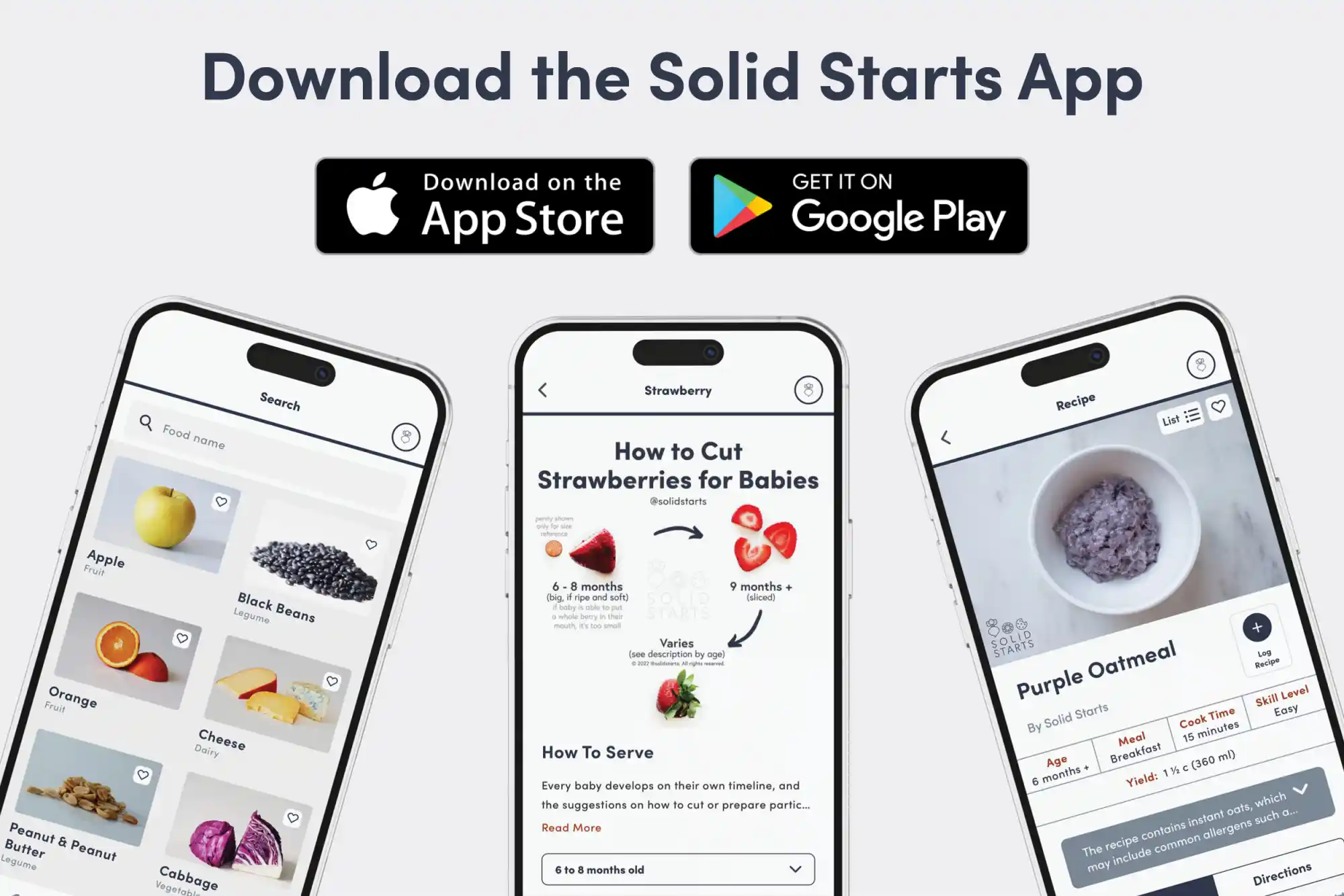Cantaloupe
Fruit
Age Suggestion
6 months
Iron-Rich
No
Common Allergen
No

Warning
Cantaloupe, especially in the form of melon balls, is a choking hazard, so keep reading to learn how to serve this fruit safely.
When can babies have cantaloupe?
Cantaloupe may be introduced as soon as baby is ready to start solids, which is generally around 6 months of age.
Cantaloupes are a type of muskmelon—a family of melons that includes many varieties, including canary, casaba, cavallion, crenshaw, crown, honeydew, winter melons, and more. While the fruit’s exact origins are unknown, it has long thrived in warm regions of Africa and Asia and today is grown worldwide, where it goes by many different names: rock melon in Southeast Asia and Australia, spanspek in South Africa, and in North America, cantaloupe. Meanwhile in Europe, cantaloupes can sometimes have a smooth white rind with green ribbing and a sweeter orange flesh.
Is cantaloupe healthy for babies?
Yes. Cantaloupe is rich in potassium, folate, vitamins A, B6, and C, as well as carotenoids like beta carotene, lutein, and zeaxanthin. Plus, it’s packed with antioxidants, phenolic compounds, and flavonoids. Together, these nutrients support baby’s hydration, electrolyte balance, nervous system, vision, metabolism, immunity, and overall bodily resilience.
It is important to wash and prepare cantaloupe and all melons with a little extra care. The melon’s rind can carry pathogenic bacteria picked up from the soil it grows in. Immediately before serving melon, thoroughly wash and scrub the rind, then pat it dry before cutting into it. Washing the melon with water works just fine; there is no need to use any special produce wash or detergent.
★Tip: Choose cantaloupe that feels heavy for its size and appears free of soft spots and mold. Note that cantaloupe is quite perishable; it is best consumed within a day or two after it has ripened. To tell if the melon is ripe, smell it: the fruit will smell floral, musky, and sweet.
Is cantaloupe a common allergen?
No, cantaloupe is not a common allergen, though individuals with Oral Allergy Syndrome (also known as pollen food allergy syndrome), especially those who are allergic to ragweed pollen, may be sensitive to cantaloupe. Oral Allergy Syndrome typically results in short-lived itching, tingling, or burning in the mouth and is unlikely to result in a dangerous reaction. Cooking cantaloupe can help minimize or even eliminate the reaction. If baby experiences Oral Allergy Syndrome, contact rashes may occur on the hands or face after handling or eating the melon. Washing hands immediately after handling cantaloupe and applying a barrier ointment (such as pure petroleum jelly or a plant-based oil/wax combination) to baby’s face before eating can help to prevent such rashes.
As you would when introducing any new food, start by offering a small quantity for the first few servings. If there is no adverse reaction, gradually increase the quantity over future meals.
Is cantaloupe a choking hazard for babies?
Yes. Cantaloupe is firm and slippery, qualities that increase the risk of choking. The risk is greatest when cantaloupe is cut into melon balls or large chunks, or when it is underripe and even more firm. To reduce the risk, make sure the fruit is ripe, and serve in an age-appropriate way as described in the How to Serve section. As always, make sure you create a safe eating environment and stay within an arm’s reach of baby during meals.
Learn the signs of choking and gagging and more about choking first aid in our free guides, Infant Rescue and Toddler Rescue.
How do you serve cantaloupe to babies?
Every baby develops on their own timeline, and the suggestions on how to cut or prepare particular foods are generalizations for a broad audience.
6 months old +:
Offer long, flat crescent moons or long, flat rectangular shapes of soft, ripe cantaloupe, seeds and rind removed. To encourage self-feeding, hold a piece in the air in front of baby and let the child grab it from you and bring it to the mouth on their own. Even ripe cantaloupe can be challenging to chew, so don’t worry if baby doesn’t get much food in the belly right away. Avoid melon balls or large chunks of cantaloupe because the firm, slippery consistency poses a high risk of choking.
9 months old +:
Serve flat rectangular shapes about the size of two adult fingers pressed together, or continue to serve as flat crescent moons of soft, ripe cantaloupe, seeds and rind removed. Continue to avoid offering melon balls or large chunks of cantaloupe because the firm, slippery consistency poses a high risk of choking.
18 months old +:
Serve long, flat pieces of ripe cantaloupe, seeds and rind removed, for the child to take bites from. At this age, if the child is able to listen to directions and chews food thoroughly, you can try serving large wedges of ripe melon with the rind still attached. Just make sure to wash the rind before cutting into the melon and remove any lingering seeds. Demonstrate to the toddler how to bite into the fruit, avoiding the rind, before handing over a piece. You may need to hold on to the rind while the child bites at first.
24 months old +:
Continue serving ripe cantaloupe in long, flat pieces or as large wedges on the rind, for the child to practice taking bites from. At about 2 years of age, a child may be ready to start taking bites of cantaloupe chunks, as often sold in containers of pre-cut fruit. Chunks of cantaloupe can pose a choking risk because they are hard and slippery. Oftentimes, cantaloupe chunks can be about the size of a toddler’s mouth, increasing the risk that the child will attempt to place the entire fruit in their mouth instead of taking a manageable bite. If the child is able to eat and swallow a variety of soft, easy-to-chew foods using the following skills, they may be ready to try chunks of cantaloupe:
Bites into food to break off smaller pieces
Moves food to the side of the mouth (to the molars) with the tongue
Chews food and breaks it down before swallowing
Manages food when it breaks apart in the mouth and spit out food when necessary
Before offering a cantaloupe chunk to a child at this age, we suggest demonstrating how to safely take a bite and show how you move the piece to your molars to chew. You may want to hold the chunk of cantaloupe for the child to practice biting—hold at the corner of the mouth and allow the child to close their teeth on the food. Coach the child to thoroughly chew the chunk of cantaloupe before swallowing. You can demonstrate this by chewing with your mouth open to show how your molars have mashed the fruit so that it is safe to swallow.



How to prepare a cantaloupe for babies 6 months+
Not sure what food to try next? Have a look at our guide, 50 Fantastic First Foods for Babies.
Written by
Expert Tips Delivered to Your Inbox
Sign up for weekly tips, recipes and more!
The content offered on SolidStarts.com is for informational purposes only. Solidstarts is not engaged in rendering professional advice, whether medical or otherwise, to individual users or their children or families. No content on this site, regardless of date, should ever be used as a substitute for direct medical advice from your doctor or your medical or health professional, nutritionist, or expert in pediatric feeding and eating. By accessing the content on SolidStarts.com, you acknowledge and agree that you are accepting the responsibility for your child’s health and well-being. In return for providing you with an array of content “baby-led weaning” information, you waive any claims that you or your child may have as a result of utilizing the content on SolidStarts.com.







